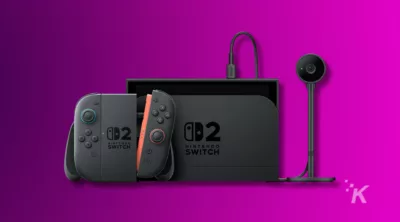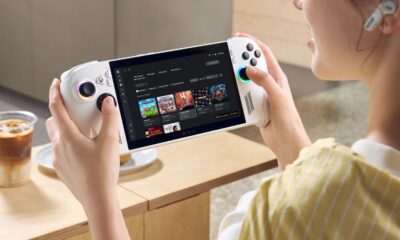Gaming
Review: RedMagic 6 – a gaming powerhouse that’s hard to handle
There’s a lot to like about this offering, but it falls short in places.
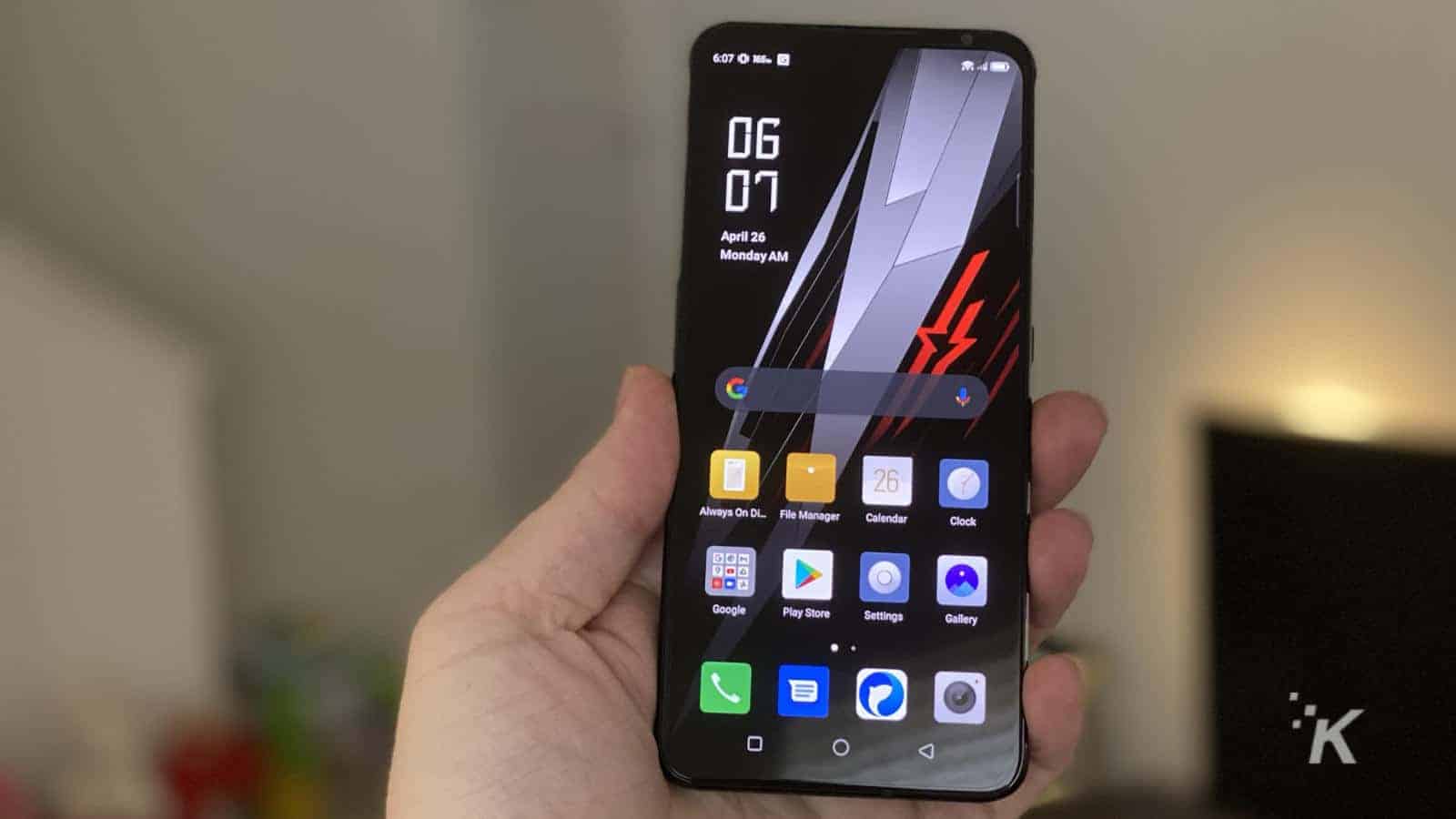
Just a heads up, if you buy something through our links, we may get a small share of the sale. It’s one of the ways we keep the lights on here. Click here for more.
[letsreview postid=”147601″]
Mobile gaming is a huge business, raking in billions of dollars yearly. You’d think that with that market, there would be more companies creating gaming-focused smartphones, but really they’re still a niche item as most mobile games are built to work on 60Hz screens, and almost every smartphone uses the same chipsets. One company bucking that trend is RedMagic, which has been pumping out smartphones since 2018.
It’s only been half a year since we looked at their last gaming-focused smartphone, the RedMagic 5S. Today we’re looking at their latest gaming handset, the $599 RedMagic 6. It’s probably the cheapest handset you’ll find using the flagship Snapdragon 888 chipset, and definitely the cheapest gaming handset you can get.
There’s also a Pro version, which doubles the storage, increases the RAM, and changes the back cover material, and costs $100 more.
Okay, do you really need a dedicated gaming phone?
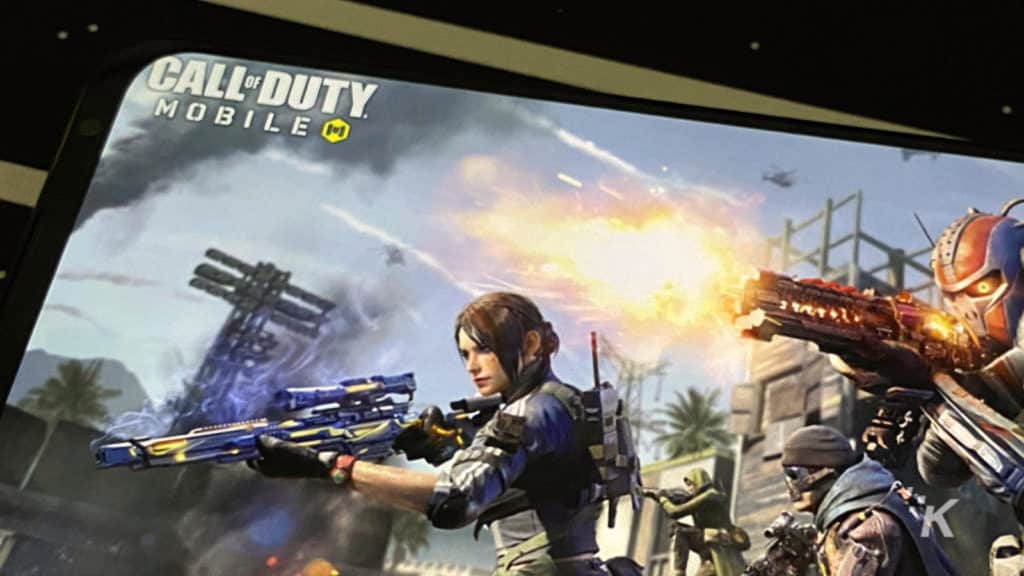
You possibly don’t need a phone specifically designed for gaming, but if you do a lot of mobile gaming, it might make sense. See, under extended loads, most smartphones heat up, with only limited cooling options to wick away heat from under your fingers. RedMagic does it differently, with a total of seven heat transfer and cooling methods inside this handset, ranging from heatsinks to vapor chambers, and even a cooling fan.
Yes, a cooling fan. It’s not set to spin up by default, but you can switch it to automatic where it will ramp up according to the temperature inside the phone, or there’s a performance mode where it will stay on high speed to help keep your phone cool. This works really well in practice, with temperatures staying cool to the touch even after long periods of playing graphically demanding games.
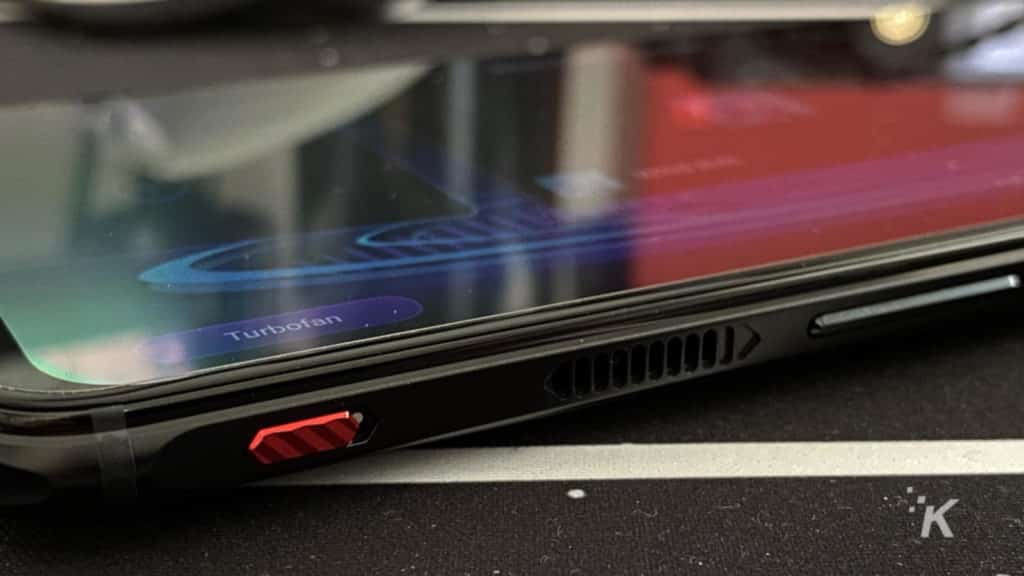
That cooling performance is also a double-edged sword. See, small fans are noisy, and this one is no exception. It’s good that you can switch it completely off though, so you don’t have to hear the mosquito-like buzzing constantly. The other thing is that because there’s a hole through the phone, it’s not got any sort of IP rating for waterproofness.
Gaming PCs get high-refresh rate monitors, and gaming phones should get no less. The RedMagic 6 has a 6.8-inch AMOLED panel with a resolution of 2400×1080. That might seem a little low, since lots of flagship devices have a 1440p panel nowadays, but the RedMagic 6 has a few things those phones don’t. The panel has a max refresh rate of 165Hz, or it can run at 120Hz, or 90Hz, or even 60Hz to save battery life. That refresh rate is also adaptive to the content being used, which is cool.
It’s also got a touch sampling rate of 500Hz for single-touches, and 360Hz for multi-touch. Anyone who’s experienced frustration at their phone not responding under frantic gaming conditions will be impressed by how well the RedMagic 6 responds.
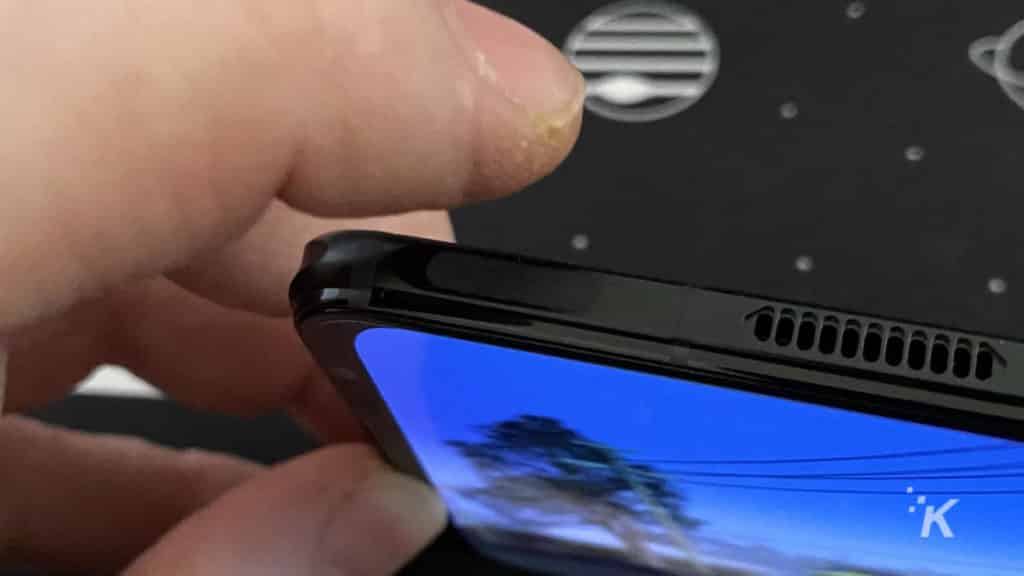
That’s not all of its gaming features though. The RedMagic 6 has in-built shoulder triggers, just like the previous devices. This time, they’re at a 400Hz sampling rate, and they sit comfortably under your pointer fingers when you’re holding the phone in landscape. There are the usual volume rocker and power buttons on the sides, and what looks like a mute slider is actually a switch that puts the phone into RedMagic’s Game Space dashboard.

Game Space is the dedicated gaming mode that turns the usual Nubia Launcher into a carousel of your currently installed games. It’s closer to a handheld gaming console at this point, with controls for the screen, cooling, and lighting all in one place, as well as the ability to create macros or record your gameplay so you can zone out into gaming bliss without distraction.
Oh, and you can turn off notifications or disable non-essential programs as well for more performance.
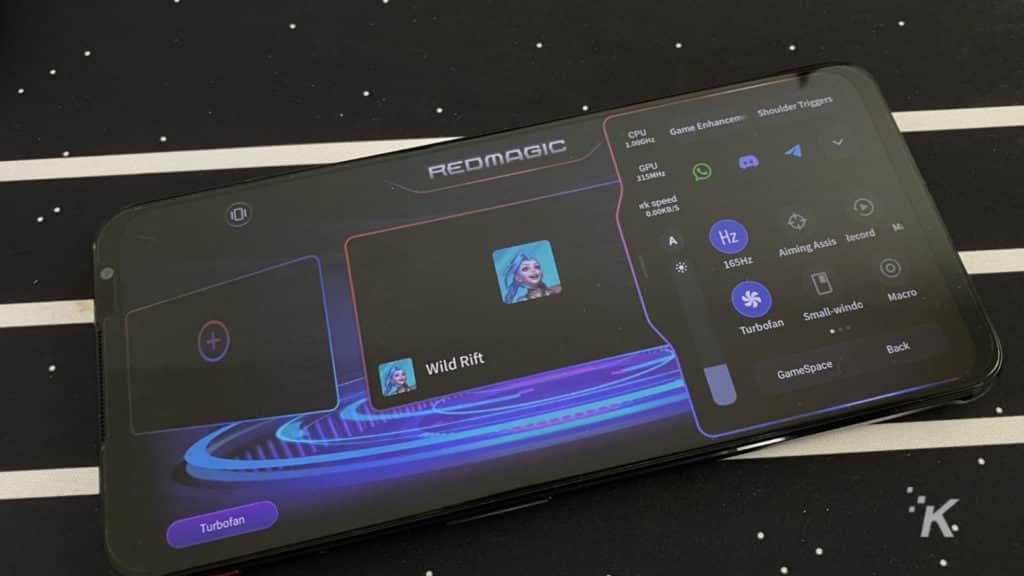
All of those gaming-specific features won’t mean much if the RedMagic 6 doesn’t have the power inside to give a smooth gaming experience, but that’s not going to be a worry for the Snapdragon 888 chipset. RedMagic paired it with 12GB of RAM, so you shouldn’t run out of resources for any game, even when multitasking. The $599 RedMagic 6 as reviewed only comes with 128GB of UFS 3.1 storage though, so if you think you’ll fill that quickly, the RedMagic 6 Pro with its 16GB of RAM and 256GB of storage might be a better fit.
You get WiFi 6E which is nice, even if there aren’t many 6E capable wireless routers yet. Bluetooth 5.1 also provides solid wireless connectivity for all your headphones and other gadgets, important if you prefer to use a standalone controller to game with.
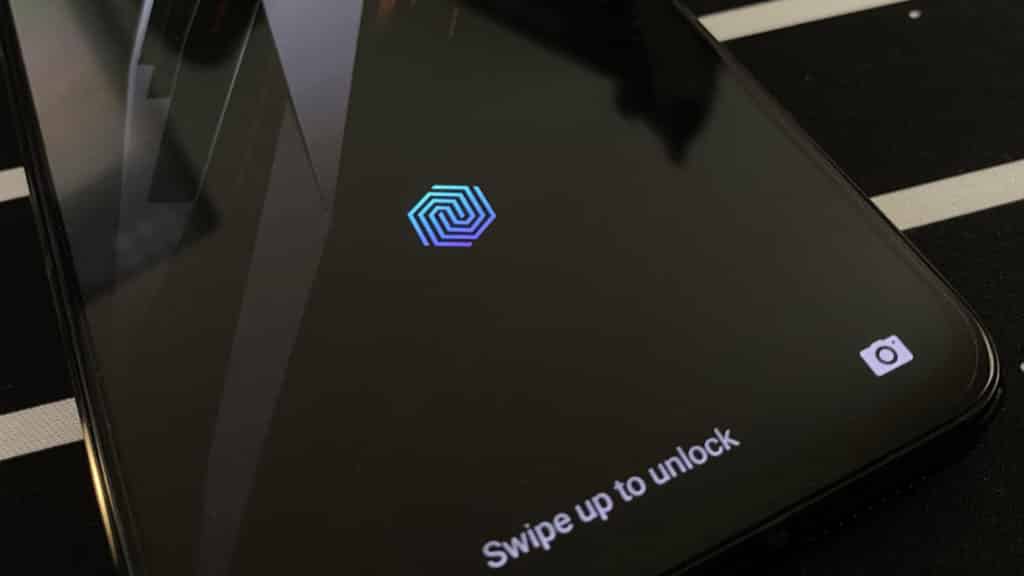
The under-screen fingerprint sensor is quick to pick up once you place a finger on it, a big improvement over last year’s model and over any other in-display sensor we’ve tested to date.
Oh, a quick word about 5G support before we continue into the analysis. The RedMagic 6 supports mid-band n41 and low-band n78 bands, so no fancy mmWave here. No carrier in the US is using the n78 bands at all. Sprint was developing the n41 bands before the merger with T-Mobile, so there’s a chance that you’ll get 5G on the RedMagic 6 if you’re on T-Mobile or one of the MVNO’s that runs on T-Mobile’s network. Our European readers shouldn’t have any issues with 5G support though, as their 5G networks are focused on the mid-bands.
That’s probably down to cost cutting, as the complicated antenna used for mmWave and other 5G bands is larger than 4G LTE antenna, and a large part of why flagship 5G smartphones are around the $1,000 mark.
Does the RedMagic 6 deliver gaming glory?
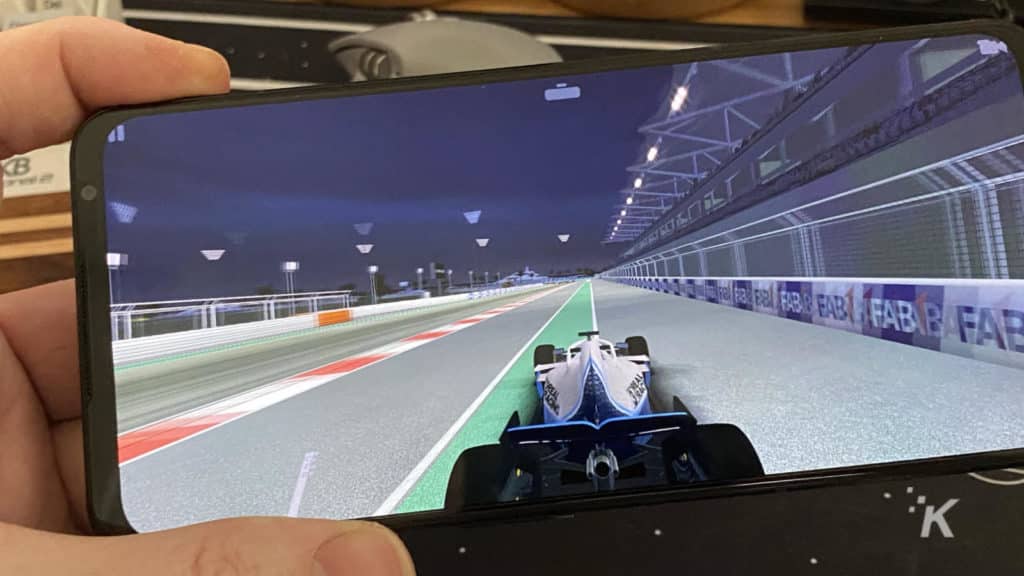
Anyone who buys this handset to play the latest Android games isn’t going to be disappointed with the performance. Between the Snapdragon 888, 12GB of RAM, and the 165Hz max screen, gaming is snappy and felt like high-refresh-rate PC gaming. The physical, haptic triggers are improved from the RedMagic 5S, and they greatly make FPS and racing games more enjoyable as there are only so many controls your thumbs can handle at once.
The thing is, we could only find one Android game that could take advantage of the 165Hz screen, Real Racing 3. CoD Mobile and Dead Trigger both locked to 120Hz, with the majority of tested games maxing out at 60Hz. The extra refresh rate is great for navigating around the phone though, and games will catch up as more phones use higher-refresh panels.
For peak performance, you’ll want to have the cooling fan enabled. That tiny fan is noisy at full speed though, so you’ll also want to wear headphones. Yes, the stereo speakers are loud enough to be heard over the fan but it’s better with headphones, especially if you have some sort of active noise cancellation. If you are using the speakers, leave them a few notches away from max, as the treble distorts badly at full volume.
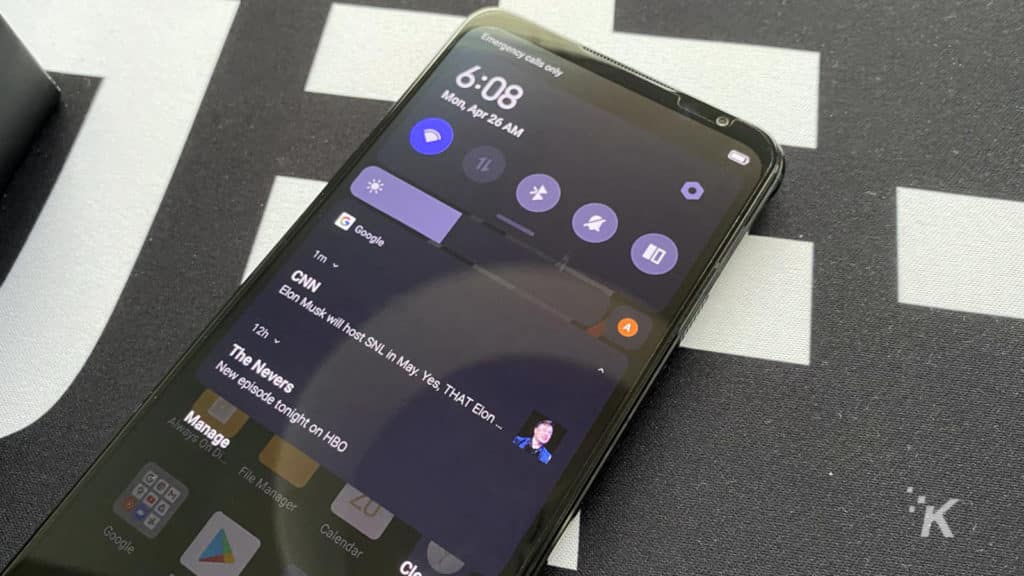
Nubia’s Launcher isn’t far off vanilla Android, which is good because you can’t change the launcher to your favorite. Maybe that’s the trade-off for having the Game Space dedicated launcher. While it runs Android 11, one of the most useful features is missing, that of long-pressing an app icon to bring up quick-menu items. The only option is to remove the app, so you have to go find the app in the settings app to do things like clear cache.
We noticed a possible bug in the WiFi, where it would stop downloading from Google Play if the screen locked. Possibly there’s a setting to fix this, we got around it by setting the screen to not sleep while we set the phone up.
Battery life from the 5,050mAh is good, with an average day not making me reach for the charger mid-afternoon. That changes once gaming is factored in, with a rough quarter of the charge being used per hour, with the screen in 165Hz mode and the fan running on Auto. Yes, that means four hours or less from one charge if you’re playing games constantly.
The included 30W fast charger is great though, with under an hour to fully charge that monstrous battery. If you buy the 66W accessory charger, that time will drop substantially, and even the heaviest gamer won’t have to wait long for a full charge.
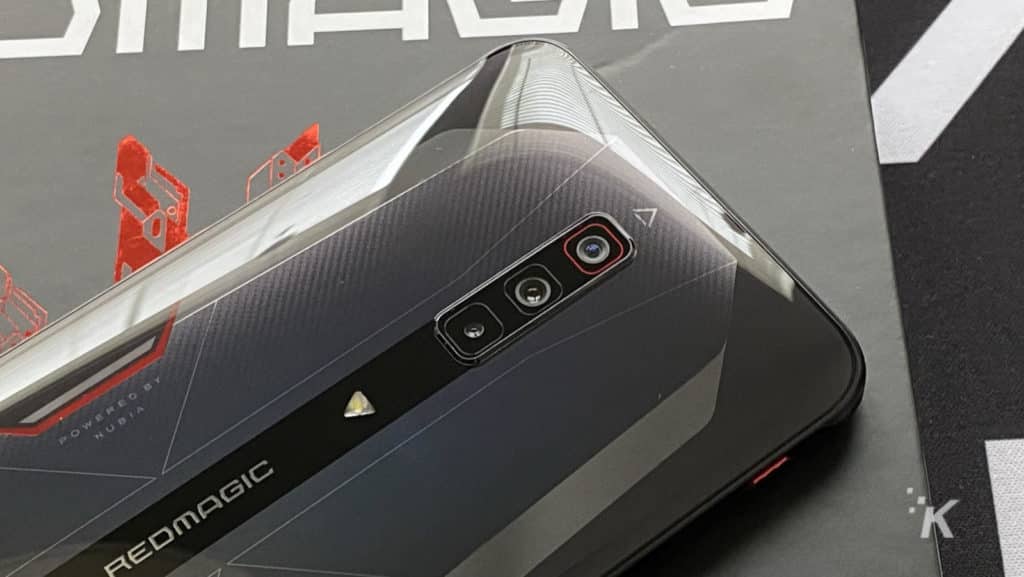
The Samsung ISOCELL GW3 sensor in the main camera is 64MP, and RedMagic have added a 8MP ultra wide-angle and a 2MP macro to the cluster. The thing is, the sensors used are only part of the equation when talking about smartphone photography, with the software having possibly more effect on the eventual images.
Unfortunately, the images produced by the RedMagic 6 aren’t up to standard. They’re certainly usable, but colors are muted and any images taken under less-optimal conditions (like low-light) all look grainy and pixelated.

The other big negative to the camera? RedMagic’s camera app, which has some very weird UI decisions like burying the switch to use the ultra-wide sensor in the Pro mode only. Hopefully, an update will bring that to the normal screen as the ultra-wide sensor is one of my favorite things to use on any phone.
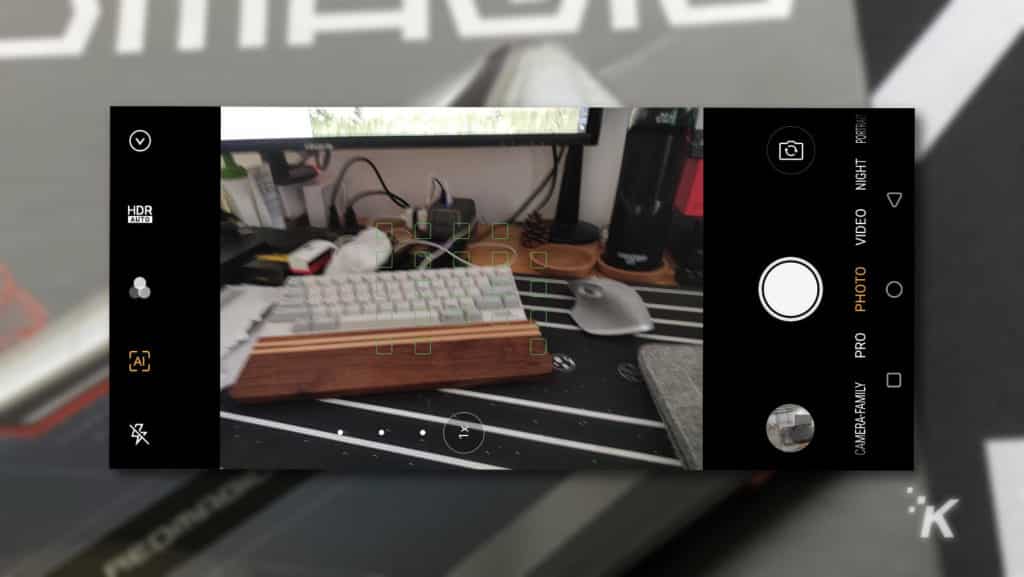
The 2MP macro lens is almost useless, as it doesn’t have autofocus. That’s going to create blurry images no matter how steady your hand is, and the low resolution makes any blur worse. You do get focus peaking though, which helps somewhat. We’d like to see the focus peaking on the normal cameras as well, there’s no technical reason not to.
Video-wise, the RedMagic 6 can record 8K at 30fps, or 4K or 1080p at 60fps. You’ll still get the same off-focus images that the stills camera gives you though, so it’s only good on paper.
So, should I buy it?
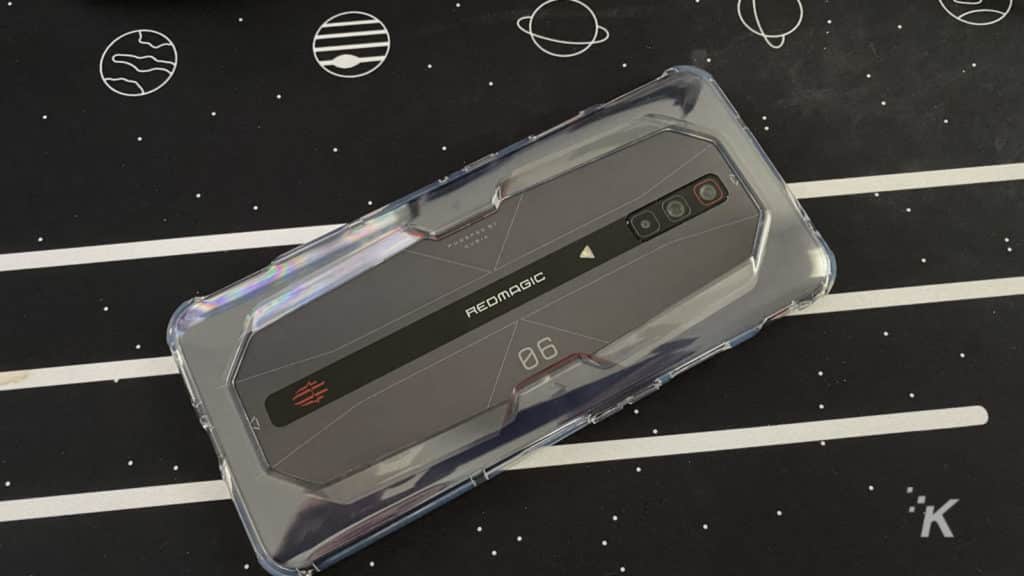
The $599 RedMagic 6 is a technical marvel, with the first 165Hz display on a smartphone, haptic triggers that actually work, active cooling that keeps that hefty Snapdragon 888 cool under pressure, and one of the only handsets left with a 3.5mm jack.
That’s all great if gaming is your main use for your phone, but what about the rest of us? Well, it’s a game of two halves here, with the software experience having some annoying glitches, and a camera that isn’t as good as it should be for this price point.
Oh, and put the included bumper case on it, cause that glass back is very slippery and you’ll drop it even when holding it in two hands.
Have any thoughts on this? Let us know down below in the comments or carry the discussion over to our Twitter or Facebook.
Editors’ Recommendations:
- Review: EPOS GSP 670 Wireless Gaming Headset
- Review: Roccat Elo 7.1 Air gaming headset – a solid entry in the $100 headset market
- Review: Dragon Touch MAX10 Plus – a solid, affordable 10″ tablet
- Review: Strauss & Wagner ANCBT501 noise-canceling wireless headphones
Just a heads up, if you buy something through our links, we may get a small share of the sale. It’s one of the ways we keep the lights on here. Click here for more.




















